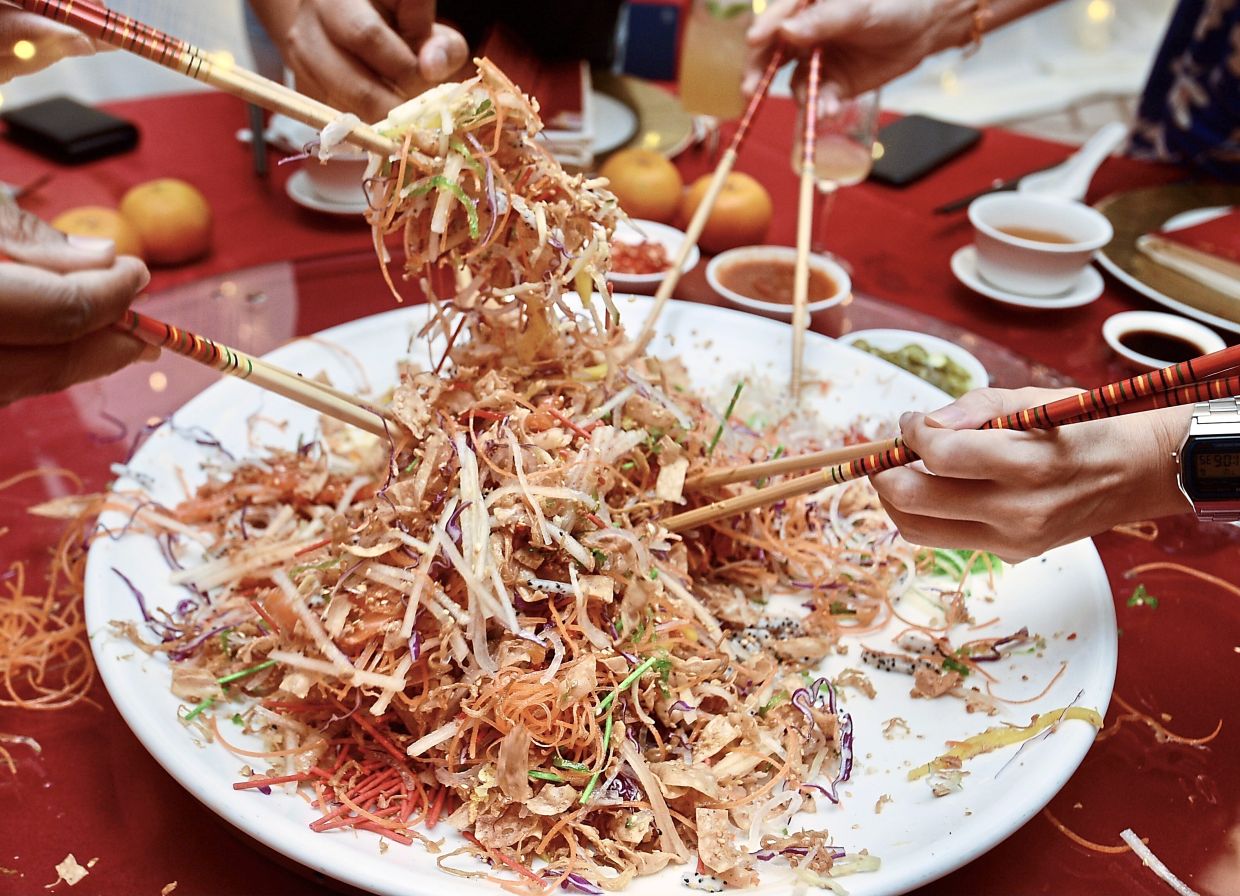

IT’S ironic that a controversial statement by Tun Dr Mahathir Mohamad, largely forgotten or more precisely, generally unknown to most Malaysians, would get resurrected.
And even more coincidental that it must come from his daughter, Datuk Paduka Marina Mahathir, who mentioned it in her column in this newspaper.
The editor who cleared her copy was probably not born yet to be able to spot Marina’s error.
The crux of the issue is that Marina had wrongly attributed a “shoot to kill” threat made by the then Home Minister, the late Ghazali Shafie, in the 1970s regarding Vietnamese refugees.

Explosive affair: Dr Mahathir’s statement in 1979 caused an uproar all around the world, sending the people around him scrambling to clear up the mess.
The “shoot to kill” threat was reported in the media to have, in fact, been made by then Deputy Prime Minister Dr Mahathir, her father.
Malaysia made world news for that remark and as usual, for the wrong reasons, a long-running and familiar theme.
I was just an angsty 18-year-old Sixth Former who spent more time reading the newspapers than textbooks.
I remember reading the gaffe by Dr Mahathir, which angered me, although I can’t remember the subsequent details.
Those of us from that generation would recall the Vietnamese refugees, known as Boat People, who began landing on the East Coast beaches in their rickety boats in 1975.
Many perished on their voyages through the rough South China Sea while trying to escape the communist rulers and soon, Pulau Bidong, off Terengganu, was turned into a refugee camp from 1978 to 1991.
Later, a transit camp was set up in Sungai Besi, Kuala Lumpur, as well as seven other camps in the east coast, Sabah and Sarawak.
The camp in Sungai Besi, set up in 1982, was officially closed in 1996 with the repatriation of 22 boat people to Hanoi, the last batch of refugees to leave Malaysia.
By that time, Malaysia had sent 248,194 people to third countries and repatriated 9,592.
In the 80s, many of us driving past Sungai Besi could clearly see the camp. I was assigned by The Star to visit some of these repatriated refugees in Vietnam, ahead of the country’s admission into Asean in 1995.
They were happy to talk to a journalist from Malaysia who showed interest in how they had fared.
Digging into the archives, I interviewed Bui Huu Duyen in Ho Chi Minh City, who said he picked up Bahasa Malaysia from watching television and conversing with the camp policemen.
He was only 16 years old when he fled Vietnam, but it had nothing to do with politics except to migrate to the United States. He jumped on a crammed boat with 200 people on board. After years in Malaysia, he agreed to go home, only to find Russia was no longer communist, Vietnam asylum seekers were no longer automatically considered refugees, a status which would be a passport to resettlement in the West, and Vietnam had launched its doi moi (economic reconstruction) to welcome capitalists.
But not all was rosy. In 1995, over 4,000 refugees tore down the fence at the Sungai Besi camp and even disconnected the power supply in a protest against their return to Vietnam. There were reports that home-made weapons were found.
His years in Sungai Besi, where he learnt English, helped him get a job as a driver.
However, the late 1970s were turbulent times, when boat people began to land on our shores, which tested how Malaysians were going to handle these unwelcome visitors.
The toxic elements of race, religion and politics all came into play, as is expected in Malaysia. In fact, it’s still happening today, as we’re well aware. All this became an explosive affair when Dr Mahathir made that remark.
In her column dated Jan 30, Marina said, among other things: “I’ve been through embarrassing moments abroad when our politicians have said something stupid and then tried to cover it up.
“In the late 70s when we had many Vietnamese refugees landing on our shores, our then home minister announced that we would shoot any that washed up on our beaches.
“Predictably, outrage ensued around the world. He then gave the standard politician’s excuse, that he was misquoted, that he actually said he would ‘shoo’ them away. Did anyone believe it?”
In a Facebook post subsequently, Marina thanked all those who had pointed out the “major factual mistake” in her column, adding “it seems that I’m capable of making my own gaffes, so I stand corrected and sincerely apologise.
“It was not meant to revise history, as some have alleged, it was wholly the weak memory of something that happened when I was barely out of my teens and still trying to make sense of the world.”
It’s understandable. Even the copy clearer at The Star failed to notice the error and in normal cases, the editor would have corrected it and informed the writer.
The uproar caused by Dr Mahathir led to then Prime Minister Tun Hussein Onn reportedly rushing to reassure then UN secretary-general Kurt Waldheim in a letter that there was no such policy.
“I wish to state that our measures to prevent further inflow of the boat people do not include shooting them,” Hussein said, according to news reports.
The Washington Post report noted that Hussein’s statement contradicted Dr Mahathir’s words, “who according to several news agencies, threatened that new refugees would be shot and that the estimated 75,000 in camps here would be put back to sea”. He also was reported to have said that Malaysia was building a fleet of boats.
Last week, veteran journalist Rajan Moses, who was then with Bernama, revealed how he was “punished” for reporting squarely about comments by Dr Mahathir in 1979 that the boat people would be shot on sight to prevent them from landing on Malaysian shores.
Moses said: “I was the only journalist, a Bernama journalist at that, who actually wrote the ‘shoot on sight’ story based on what Dr Mahathir said to a few reporters at the UKM news conference in June 1979.
“It made world headlines. The Bernama story (my story) was played up well, but later was re-edited and tempered to take out the sting in the original story,” he reportedly explained in the Malaysia First chat group, whose members broached the issue.
All this is history, but the controversy has helped put the missing pieces of the jigsaw puzzle together so we can have a better and accurate understanding of the past, and hopefully, a better way of handling similar incidents in the future.
As for me, I’m more worried that our politicians have continued to shoot themselves in their foot and drag the country down.
Just a few years back, my church had to shut down its Vietnamese ministry when almost all the workers had returned home because their country had progressed and moved ahead in Asean.
In just a few decades and despite the wounds of the war, Vietnam has blossomed impressively. It has consistently been among the fastest growing economies in the region in terms of GDP growth, foreign direct investment, and middle-income population.
It’s shaping up as the region’s single economic success story in the coronavirus era, according to asia.nikkei.com.
We have plenty of reasons to be concerned. We can’t even beat the Vietnamese in football now.
Excessive, unconstructive politicking in a democracy does have many pitfalls. Perhaps it’s time we shoo away these politicians. Or shoot them down via the ballot boxes.

Emblazoned on our nation’s coat of arms and Filem Negara’s emblem, yet our tigers face a dire prospect in Kelantan.
THIS may be the Year of the Tiger, but they are disappearing from our jungles at an alarming rate. Let’s dispense with the silly excuses. We have destroyed their habitat and now, we’re expected to believe in this ecological fairy tale that clearing jungles is advantageous to these majestic animals.
We’re used to our politicians coming up with yarns, but of late, even senior government officials are getting in on the act.
It’s hard to accept the claim that deforested areas are good for tigers, supposedly because their prey, such as deer, would appear there with the new trees.
Kelantan Forestry Department director Abdul Khalim Abu Samah was recently quoted saying that after an area is deforested, new vegetation will grow, which will encourage the presence of new animal species that serve as food for tigers.
“The tiger population will become larger when small trees grow in the deforested area. The area will see the presence of animals such as mouse deer, which are food for tigers. It will be easier for tigers to hunt their prey,” Khalim had said.
But before we delve into the subject, it’s important we recognise that logging is allowed and accepted in Malaysia.
Selective logging is not the same as excessive logging, which has led to massive deforestation. That’s the sore point with most of us. Then, there’s illegal logging, too.
Last week, WWF-Malaysia clarified that its study published in 2009, entitled “The importance of selectively logged forests for tiger panthera tigris conservation: A population density estimate in Peninsular Malaysia” by D. Mark Rayan and Shariff Wan Mohamad, was conducted to obtain information on the density of tigers, specifically in selectively logged forests.
The NGO said it was important to note that the study refers to selective logging, not indiscriminate logging.
Selective logging is a forestry practice that involves only cutting a select number of trees annually in a forest compartment, instead of the whole forest at once, in line with sustainable forest management (SFM) practices. The 2009 study found a density estimate of 2.59 adult tigers per 100sq km.
This indicates that selectively logged forests, such as Gunung Basor Forest Reserve, have the potential to accommodate a high density of tigers.
The study concluded that further research was urgently needed to understand the ecology of tigers and their prey in selectively logged forests.
This is to ensure that tiger-friendly management guidelines can be recommended for SFM and therefore, significantly aid tiger conservation in Malaysia.
WWF-Malaysia must have issued the statement to avoid any misunderstanding following Khalim’s revelation.
But to have a better understanding of what has been concluded, the Malaysian Nature Society (MNS) has advised that the practical aspects need to be accounted for as well.
“The claim that deforested areas may be good for tigers should be looked at from a practical angle,” said MNS president Ahmad Ismail.
“It might be theoretically acceptable to say that when dense forests are cleared, it would create an area where new trees can grow, and this would benefit herbivores.
“Practically, we have to look at the size of the forest that we have for the tiger’s habitat. Is it big enough for them to run away from logging areas when logging activities are carried out?
“Tigers are not human-friendly animals. They will run far away from areas where there are human activities. But if the area is not big enough, it might cause conflict between them and humans,” he said.
However, a mapping of emerging deforestation hot spots in Kelantan, using the Geographical Information System (GIS) by Nazir Natasha Rozana, found that the state’s forests have been heavily exploited over the past few decades due to many factors to satisfy human needs, thus causing the east coast state to lose its forest cover in the process.
It’s hard to fathom what Kelantan Deputy Mentri Besar Nik Mohd Amar Nik Abdullah was thinking when he reportedly said: “Tigers do not enter villages because of deforestation. We have read a statement from the Kelantan Wildlife and National Parks Department (Perhilitan), which says that tigers entered the village because they were sick.”
Well, it’s tough to say who’s ill – the poor tigers or our twisted politicians.
According to another report from 2010, Kelantan had 823ha of natural forest, extending over 83% of its land area. However, by 2020, it lost 8.83ha of natural forest, reveals the Global Forest Watch.
It said Kelantan was responsible for 63% of all tree cover loss between 2001 and 2020. This region had the most tree cover loss at 262kha compared to an average of 41.6kha. Areas are provided in thousands of hectares or kha.
The worst affected areas are Gua Musang, Kuala Krai, Tanah Merah, Jeli and Machang, with the PAS-led state government continuing to rely heavily on logging as a revenue source.
In 2019, Channel News Asia reported that Kelantan, which is probably the poorest state, is “blessed with land and forests, but today, much of the state’s forests, hills and mountains have been razed for oil palm, durian plantations and mining, depriving the state of natural flood prevention features.”
“Because licences to mine, plant and log are lucrative sources of income, Kelantan does not seem to be inclined to put a stop to it. The only way that this situation can be improved or mitigated is for regulations in this area to change.’’
Another report by researcher Khor Yu Leng said Kelantan’s Orang Asli living near Gua Musang have been affected by logging and durian plantation development, pointing out that the flood of 2014 was record setting, with experts singling out the root of the problem to be deforestation.
Incredibly, despite doing a lousy job in administering the state, with over reliance on funding via concessions and logging, the Islamist government has continued to get itself re-elected in every election.
Tourism, a low hanging fruit in economic terms, is almost non-existent with the state government culling its Malay traditional culture by branding it unIslamic.
Manufacturing is non-existent and if commodities are the only form of agriculture, it will just mean more land clearing. It’s clear for all to see the difference between states that have better governance and broader sources of revenue and those that don’t.
If the Orang Asli and even the general population don’t stand a chance in Kelantan, what more the tigers in the state?
In the words of the senior PAS leader and forestry official, the tigers must be sick to come out of the jungles, and the logic that the state must clear the forest so that the tigers can live better, is alarming, to say the least.
It’s a given that the tigers in Kelantan won’t have a rip-roaring time, but Malaysians can roar to put pressure on politicians and officials to save one of the most majestic animals and our national pride.

KUALA LUMPUR (The Star/Asia News Network): The Mujahideen Indonesia Timur (MIT) (pic), which operates in the mountainous jungle of Poso, Sulawesi, used to have Uighurs from China working side by side with them in their terrorism. According to intelligence reports, most of them used forged Turkish passports to enter Indonesia from Thailand to launch their attacks on Syiah, Christians, and the Indonesian government.
Uighurs are members of a Muslim minority community who mostly live in western Xinjiang in China, as well as across Kazakhstan, Kyrgyzstan, Uzbekistan and Turkey.
Indonesian terrorism researcher Boas Simanjuntak said according to available data from the police, there were 12 Uighurs who joined MIT in 2011, adding that some were arrested and released in 2016 and 2020, as well as deported to their country.
“Two Uighurs died on March 15 2016 in Poso during Abu Wardah @ Santoso’s leadership between 1976 and 2016,” he said. But there have also been reports that four from six Uighurs were killed in 2016 in central Sulawesi.
Police also named two of them, Farok @ Magalasi Bahtusan and Nuretin @ Abdul Malik, who were caught in a gunfight with the police and army on March 15, 2016.
It said that same day, MIT dumped the body of another Uighur into a river after he allegedly fled from the group, and a week later, an Uighur named Joko @ Turang Ismail was killed, according to Radio Free Asia.
Boas said under Santoso’s leadership, MIT had links with Islamic State (ISIS) and that there was a directive from IS to provide military training for Uighurs before they join the terrorist group in Syria.
RFA quoted Ridlwan Habib, terrorism expert at the University of Indonesia, as saying that some Uighurs came to Indonesia to train with Santoso’s group before returning to China to commit acts of terror.
Newslines Institute said there were about 1,500 Uighurs fighting for ISIS as early as 2015, and that figure shot up to between 4,000 and 5,000, but following the defeat of ISIS, there is now an estimated 2,000 of them at the Al-Hol camp in northeast Syria.
Al-Hol is a refugee camp controlled by US-backed Syrian Democratic Forces, with a population of 60,000 people, mostly ISIS detainees and their families from 50 over countries.
The news of Indonesian security forces laying the final blow on terror group Mujahideen Indonesia Timur (MIT), has largely gone unreported in the region’s media.
Yet, the group, despite its small size and operating in a mountainous village in Sulawesi, has the reputation of being the most notorious and brutal group in the region as it is known for beheading its victims, especially Christians and villagers who reported on them to the authorities.
The hunt is now on for three remnants of MIT, which had ties with the Islamic State (ISIS), according to BenarNews.org
Sulawesi is an Indonesian island east of Borneo and located west of the Malukus island and south of Mindanao and the Sulu Archipelago.
Ali Kejora, who was declared Indonesia’s most wanted terrorist and leader of MIT, was killed in a joint operation by the military and police forces. He was shot dead in September 2021 after eluding capture for more than a decade.
He was involved in various attacks on police stations and Christian communities including missionaries, where his exploits included beheading victims and burning down a church.
Another leader, Jaka Ramadhan @ Ikrima was also shot in late September 2021.
“For MIT, the group was weakened by being left with only nine personnel in early 2021, and the decapitation of its leadership in September 2021.
“While the anti-terror police unit Detachment 88 also apprehended prospective MIT members who were en route to Poso, 132 militants have largely been less inclined to travel to the area.
“Travel costs to Poso from Java or West Nusa Tenggara – the main regions where MIT militants have originated from – even prior to the pandemic, were prohibitively more expensive compared to the intra-Java or Java-Sumatra travels conducted,” reveals the newly released, January 2022 issue of the Annual Threat Assessment.
The report was made by the S. Rajaratnam School of International Studies, Nanyang Technological University.
But Indonesian terrorism researcher Boas Simanjunak of Ruangobrol.id, who specialises in fighting radicalism and terrorism, said while MIT has weakened, it remains “the benchmark for individual, small or big groups although they may not be related with terrorism per se, motivating them to stay consistent on their activities, since they feel that Islam is still being marginalised during the government tenure”.
In an interview with Sunday Star, he said even though MIT was decreasing on combatants, “we should be aware of, at least, three factors – its ability for retaliation (fearmongering action by killing locals), attraction for youth supporters (toxic masculinity by glorifying injustice narrative by flashing weapons and asking to struggle for religion) and wide-open track, which means the lack of task force in the central Sulawesi mountainous and sea areas.”
Boas said the three remnants were Nae @ Galuh @ Muklas, Askar @ Jaid @ ‘Pak Guru’, and Suhardin @ Hasan Pranata.
They are said to be equipped with firearms and home-made bombs and operating in the jungles of Poso, Sulawesi.




Festive fever: Yee Sang is a popular must have Chinese New Year dish and many will wish for health, happiness and prosperity when tossing it. – The Star
THE best part of Malaysian festivals is always the short videos depicting the celebrations of the various communities. They take either the humorous or tearjerker route, but they invariably end with a positive note.
Social media platforms are brimming with Chinese New Year short films ahead of the spring festival. There’s a common theme to all these films – it has been a tough two years because of the Covid-19 pandemic, and younger family members are deliberating whether to go home for the traditional reunion dinner.
Many are struggling to catch up on their work, especially businesses (finally), while some are unsure if they could be a threat to their aged parents with the virus still rampant. But they all close with a happy note.
Well, many of us wish our real life Malaysian political saga can conclude with a cheerful conclusion, too.
We can’t tell whether to laugh or cry over the numerous political developments in our beloved Bolehland.
Our politicians and top officials have one thing in common – many can’t keep their stories consistent and believable. Sometimes, they contradict themselves, and the audience is left bewildered, and even entertained.
Thanks to poor narrative, there are always more questions than answers in the end.
Yet, these protagonists, being bad actors, are oblivious, presuming their audience to be simpletons.
Where the upcoming festival is concerned, I also love the tossing of the yee sang during Chinese New Year meals. Being the materialistic Chinese, we all wish for health, happiness and certainly prosperity – that means money.
We shamelessly wish each other “Gong Xi Fa Cai,” which literally means “good luck getting more wealth.”
Being known for hard work, perseverance and self-reliance, the Chinese community has accrued wealth and survives purely on its dedication and of course, business acumen.
Oh, how we love to trade in our stock markets. I still remember the good old days when there used to be a thing called the CNY rally, when various share prices would always shoot up before the festival.
Now, it’s depressing because our Bursa Malaysia is no longer the bee’s knees. It has become boring now.
My feng shui awareness has reminded me to make sure I don’t allow my brother, mother or girlfriend to use my account to play the market.
If you are going to dabble in stocks with a lot of money, make sure you can explain to your wife how you’ve managed to accumulate so much money. You don’t want the fierce Tiger at home to growl at you, I can hear Master Joey Yap advising me.
Certainly not advisable. It’s simply against the rules, unless it can be proven conclusively that there is no case against you. As the Hokkien say, “don’t be siao (crazy)” because no one can help you.
Here’s another feng shui suggestion – if you’re celebrating CNY. Don’t go to karaoke joints. Calculations and predictions indicate that a lot of misfortune can take place at these dimly lit places.
With the #MeToo campaign, friendly gestures at meetings with clients and staff, which may be normal, can be misconstrued. Leave all forms of corporate communications to guest relations officers. That’s certainly not the job of a lawyer or an accountant.
And stay 1.5 metres apart, as required under the Health Ministry’s Standard Operating Procedure.
Yes, you heard me. It may be a karaoke joint, or a club, but SOP must still be adhered to for your own health, profession and political longevity.
It’ll be a chore explaining any form of health or political hazard to your spouses, and electorates, especially.With MySejahtera tracking your movement, corporate meetings at karaoke joints to deliberate on the Budget 2022 seems unconvincing.
I know you need to expand to Vietnam and there is a need for the presence of Vietnamese guest officers, er, I mean translators but it doesn’t seem believable.
Possibly, a politician needs to meet their voters in a night club because in the evenings, in a more relaxed atmosphere, the electorate will be able to talk politics.
Dunno lah, just saying. What? Can’t hear me? Music too loud? Never mind, I can come closer and talk into your ears, so you can hear clearer.
All parents have this worry – that their daughters will get their drinks spiked when they go clubbing.
But in Malaysia, politicians can also get their drinks spiked. Don’t play play. Like that also can ah? Why not? Anything can happen in Malaysia one. In politics, there will always be plenty of jealousy.
These topics look to be high up on the menu of banter during the CNY reunion dinners and meals with friends, for sure.
Watching these videos always imbues a sense of nostalgia and that wish to be with our family members.
Looks like I must keep repeating to my 91-year-old mom, who is hard of hearing and a bit forgetful, that I am truly back home, and yes, I’ve contributed to the spring cleaning, too.
Yes, mom, I also used the power jet to clear all the lizard and bird droppings from the drain. Yes, everything. It’s simply shiny.
It’s good to be back in Penang. I will remain on the island for the entire three days. Yes, mom, I have no plans to go to Bukit Mertajam for clubbing appointments.
I’m sure most of us are looking forward to travelling home. Drive safely and take care. There has been a sharp drop in our Covid-19 cases, especially at the serious stages, but unfortunately, there has been a spike in political tall tales.